[ad_1]
What do Freddie Mercury, Albert Einstein, Mila Kunis, Salvador Dalí, the Dalai Lama, Gloria Estefan, M.I.A., Wassily Kandinsky, and Madeleine Albright all have in common?
According to my high school students, they are all talented, bright, and leaders in their fields.
They also experienced being displaced from their homes.
While refugees and internally displaced people may seem like a big and foreign concept, these situations and experiences are woven into many parts of our society. According to The UN Refugee Agency (UNHCR), “Refugees are people who have fled war, violence, conflict or persecution and have crossed an international border to find safety.” Internally displaced people have not crossed a border; they have stayed in their country but cannot be in their homes. There are over 84 million people currently displaced worldwide, and 35 million are children.
Chances are your students have connections to stories like these through personal experience or that of their family or friends. Most of our students can relate to feeling displaced at some point in their lives. Perhaps they moved to a new city, got an unexpected schedule change in the middle of the school year, or had to be rushed to the hospital for an emergency medical concern. You may also have students who are emancipated or are homeless.
Read on to learn more about how to bring these stories into your secondary art room with plenty of resources and a portraiture lesson idea!
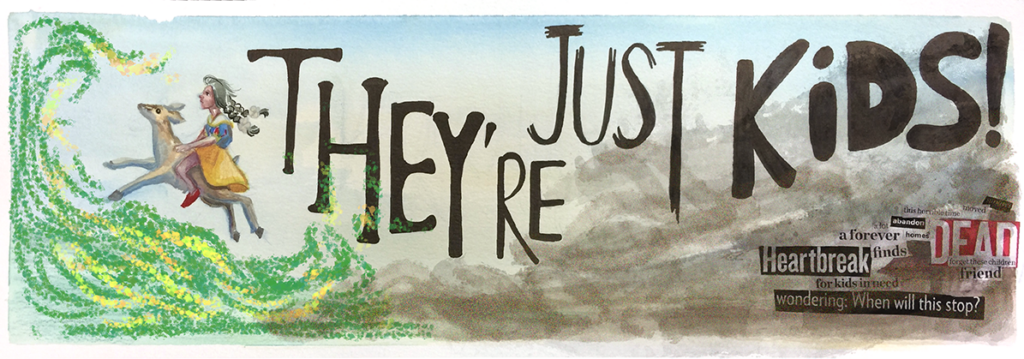
What is the role of art when it comes to processing and sharing experiences around displacement?
Because art is visual, it evokes emotion more quickly and intensely than articles and statistics. Art can be an effective tool when tackling difficult issues and concepts like displacement. It can take something that may feel overwhelming and help the artist and viewer process the information and their response. It can also allow us to “put a face on the numbers” to understand a person’s experience better.
In a study published in 2020 by UC Berkeley, “creating feelings of empathy, specifically through telling stories about the experiences of refugees, can create more of a desire to help them in the future.” As art teachers, we have the privilege of helping our students process complex topics through creative expression while building empathy and compassion.
How can we ensure all of our artists feel safe?
Bringing up feelings and memories of being displaced may be a sensitive topic for your students. Be sure to preview all resources before showing them to your classes. Take the time to know your student population. Especially note new students to your school, new students to your class, and English Language Learners. Touch base frequently with your school’s professional counselors. Furthermore, discussing difficult topics in the art room necessitates a safe, open, and honest classroom environment.
Here are some resources to build a safe classroom environment:
Let’s look at a lesson plan that fuses portraiture with experiences of displacement.
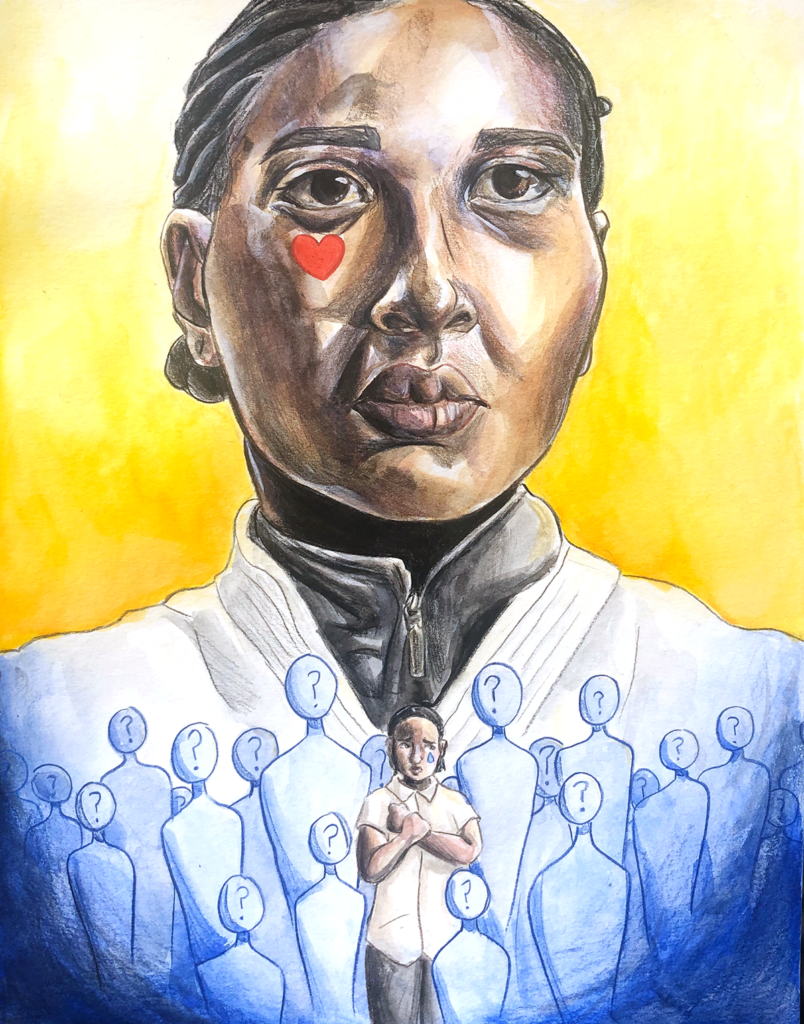
1. Share art with students.
NCAS VA:Re.7.2.lla: Evaluate the effectiveness of an image or images to influence ideas, feelings, and behaviors of specific audiences.
Many artists, both past and present, have shared experiences with being displaced. Ai Weiwei is a Chinese contemporary activist artist who was seized and held in detention for 81 days. Pablo Picasso spent almost half his life in exile in France after the Spanish Civil War. Google Arts & Culture also has a compilation of artists forced to flee their homes. Shepard Fairey, Katie DeCiccio, MUNK ONE, and LMNOPI all highlight individuals in a way that visually hooks the viewer, yet leaves you wanting to learn more.
As your students examine the images, prompt them with questions like:
- What color scheme is being used?
- What emotions does the color scheme evoke?
- Where is the subject looking?
- What kind of lines did the artist use?
- What symbols do you see in the portrait, and what could they represent?
- How did the artist use the foreground, midground, and background to tell the subject’s story?
2. Collaborate with a history teacher to introduce displacement.
NCAS VA:Cr2.2.llla: Demonstrate understanding of the importance of balancing freedom and responsibility in the use of images, materials, tools, and equipment in the creation and circulation of creative work.
Collaboration is a great opportunity to make cross-curricular connections between art and history. Reach out to a history teacher in your school to collaborate. It can be a simple brainstorming session to inform lesson planning or you can come together to co-teach activities.
Expand upon the concept of displacement. Introduce the definitions for a refugee and an internally displaced person shared above. The UNHCR has conducted and posted a lot of statistics. They range from where refugees come from, why they are displaced, where they are migrating, and where they seek safety and asylum. The Refugee Project offers interactive visuals as well. Discuss other situations or experiences that may lead to displacement. Check out the artists given above for examples.
3. Provide instruction on how to render self-portraits.
For this assignment, it may be best to focus on facial proportions. If your students are comfortable drawing faces, feel free to extend learning by incorporating figure drawing and body proportions. The FLEX Collection, Experimenting with Portraiture, and PRO Pack, Portraiture at the Secondary Level are fantastic ways to get started with tons of resources to scaffold learning. Here is a complimentary download from FLEX to help with Head and Face Proportions.
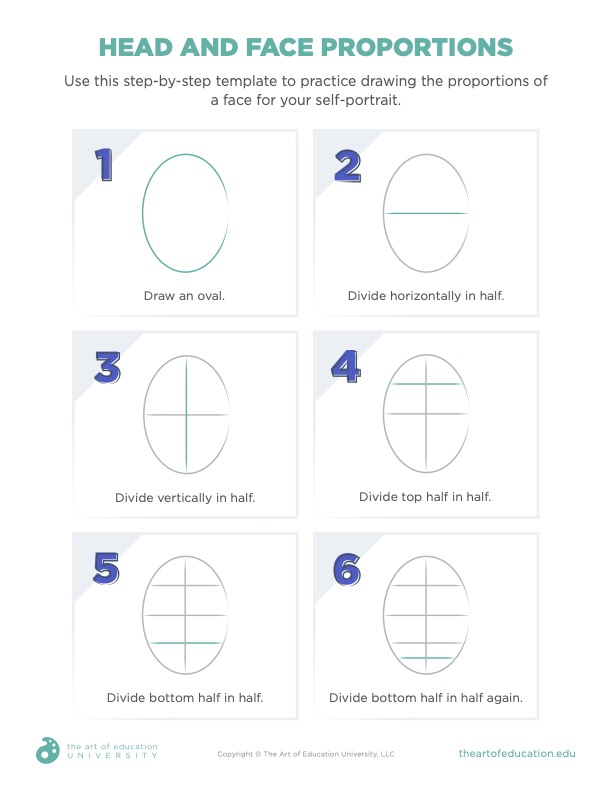
Download Now!
4. Brainstorm.
Begin with a brainstorming session. Ask your students to think about how they can represent displacement in a portrait. They can think about when they were removed from their surroundings when they didn’t want to be. Displacement can be moving because of a parent’s job or having to leave a class they enjoyed. Or, students can take inspiration from people they know, including historical or contemporary figures. Encourage students to reflect on feelings at the moment, coping strategies, and feelings looking back now. What colors, shapes, lines, and symbols can represent these?
5. Generate sketches.
NCAS VA:Cn10.1.llla: Synthesize knowledge of social, cultural, historical, and personal life with artmaking approaches to create meaningful works of art or design.
Students will create a portrait to convey an experience of displacement. Reference the portraiture resources provided above. Integrate the brainstormed colors, shapes, lines, and symbols. Encourage overlapping, repetition, filling the frame, and other compositional techniques to design a dynamic composition.
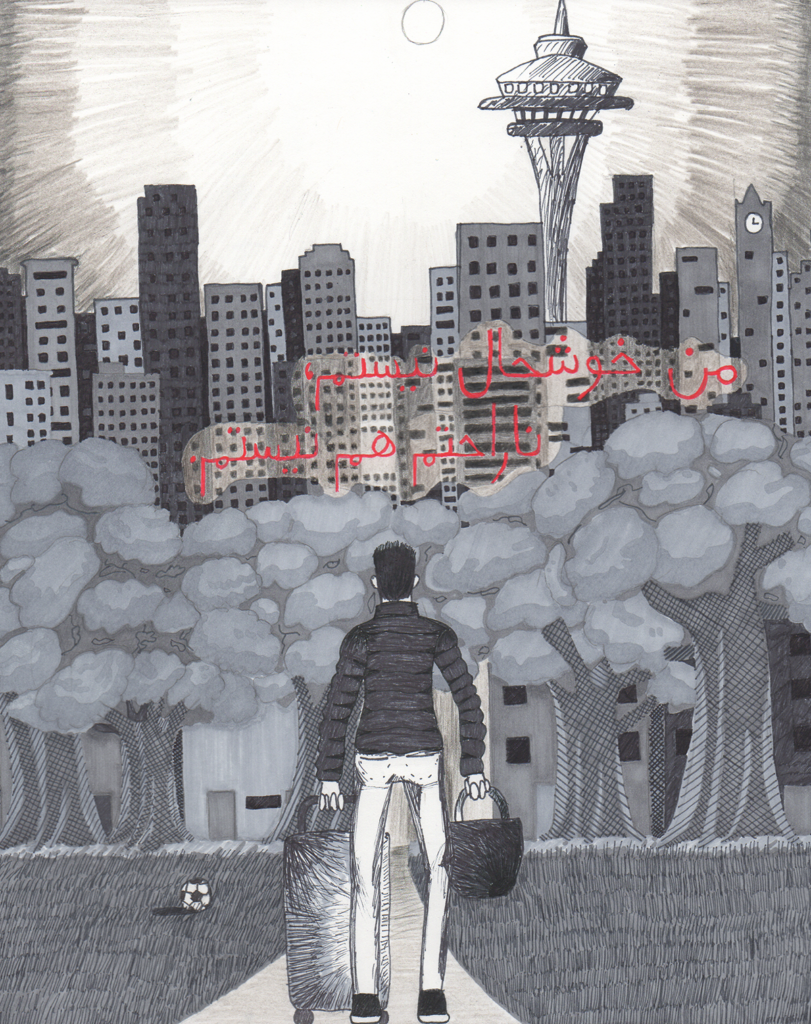
6. Create the final portrait.
Students create a final portrait that uses the Elements and Principles to tell a story of displacement. We recommend using a medium that students are already familiar with and proficient with to boost confidence.
7. Write a short reflection.
NCAS VA:Cn10.1.la: Document the process of developing ideas from early stages to fully elaborated ideas.
Students write a paragraph explaining how they used the Elements and Principles to depict the story of displacement visually. Ask students to provide specific explanations of their artistic choices.
Are you looking for more specific lesson plans around combining portraiture and storytelling? The FLEX Collections below are a great place to start:
The Storytelling Through Art PRO Pack is also a helpful resource. This Pack provides strategies for developing student voice, including ideation, character design, and storylines.
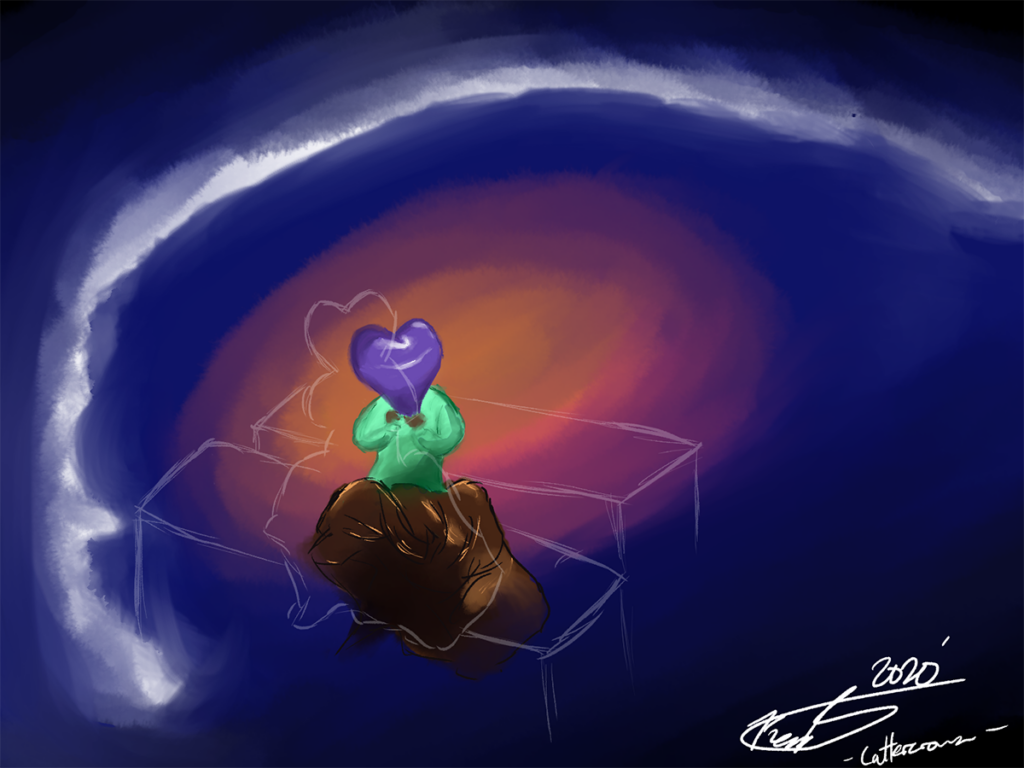
One thing I have learned is how many of my students have experienced unexpected drastic changes in their lives. It is inspiring how they have persevered with a positive outlook. It is also humbling to sit with students as they excitedly share what they have learned about themselves. While we may be quick to assume that displacement happens to “others,” it is important to remember that all of our communities and students have experienced unwarranted and unwanted change at some point in their lives. All of our communities and students have rich and diverse backgrounds and stories. It’s empowering and grows empathy for students to see people like them and their loved ones in the curriculum they are learning.
Portions of this work are based on the National Core Arts Standards. Used with permission. National Coalition for Core Arts Standards (2015) National Core Arts Standards. Rights Administered by the State Education Agency Directors of Arts Education. Dover, DE, www.nationalartsstandards.org all rights reserved.
NCAS does not endorse or promote any goods or services offered by the Art of Education University.
What part of this lesson idea is exciting to you?
How do you approach sensitive topics in your art room?
[ad_2]
Source link


:strip_icc()/BHG_PTSN19720-33d9cd22f6ab49e6a21982e451321898.jpg)

More Stories
Gurney Journey: USA Today Recommends Dinotopia
“From Generation to Generation…” — A Sanctified Art
The Public Theater’s Under The Radar Festival Lights Up NYC This January